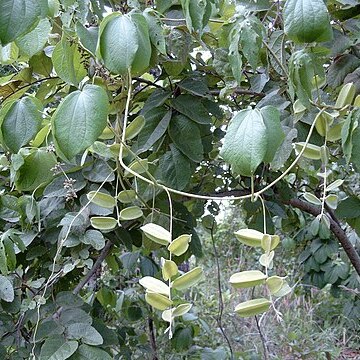A climbing yam plant. It can be 10 m long. The vine twines left or clockwise. The vine is robust and has prickles near the base. The leaf has 3 leaflets. The flowers are small and round. Sometimes it forms bulbils or small aerial yams along the stem. Underground the tubers are usually fused together to form a cluster. Some wild forms are very poisonous. The tubers vary in shape and colour. There is often a main tuber with deep lobes then small tubers around it. They are near the soil surface and 3-7 cm across. The flesh can be white, pale yellow or dark yellow.
Liane. Leaves alternate, 3-foliolate, petiole up to 200 mm long. Leaflets up to 210 mm long, median leaflet obovoid, acutely acuminate. Ultimate spikelets of inflorescence up to 15 mm long, subsessile or on peduncles up to 5 mm long.
The species includes more or less poisonous wild varieties as well as cultivated edible varieties with either white or yellow-fleshed tubers.
Annual tubers, several per plant and a common bead, near the soil surface
Spiny climber, 9 ft. high
Rather prickly bulbils



